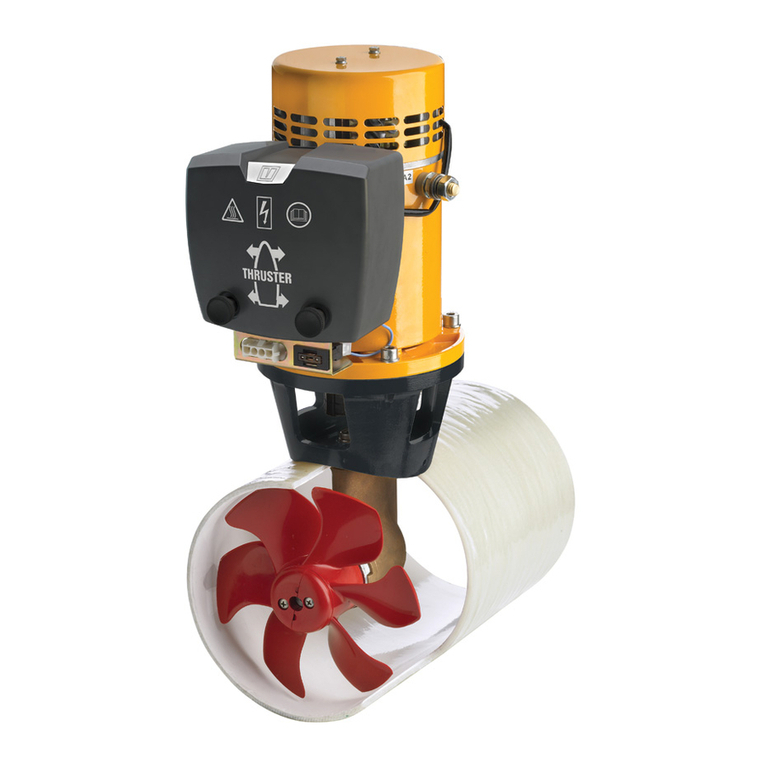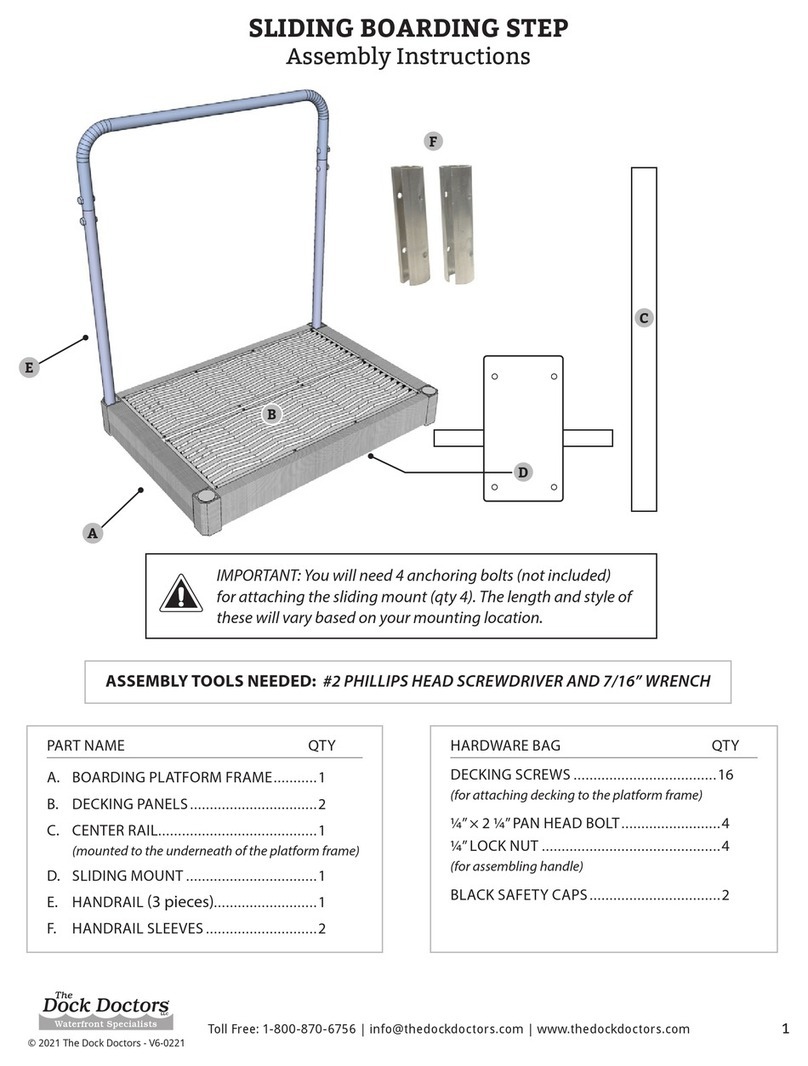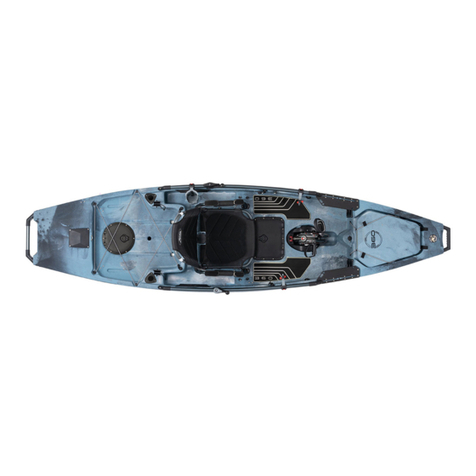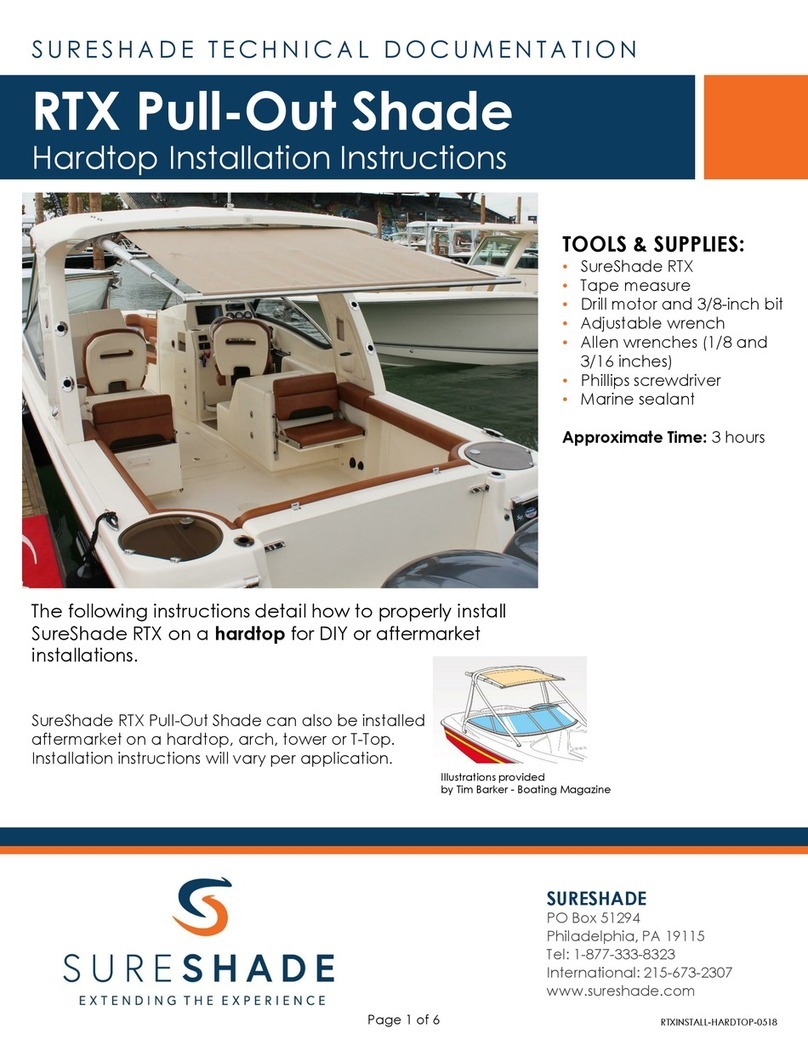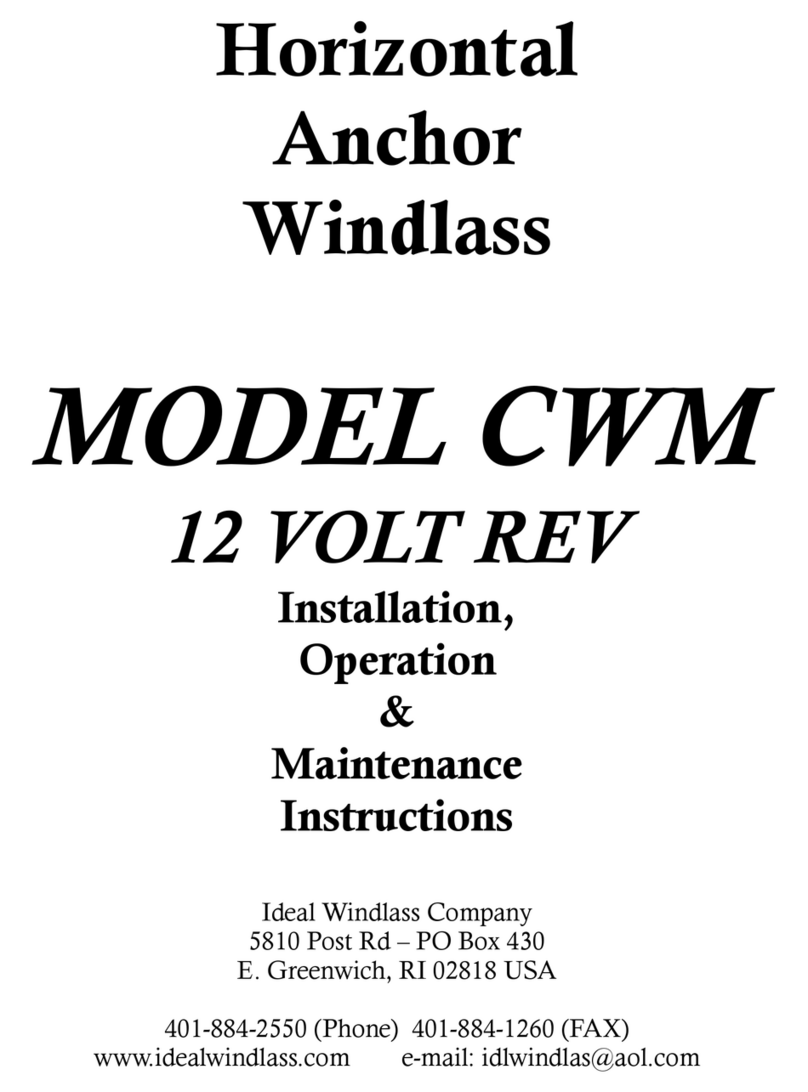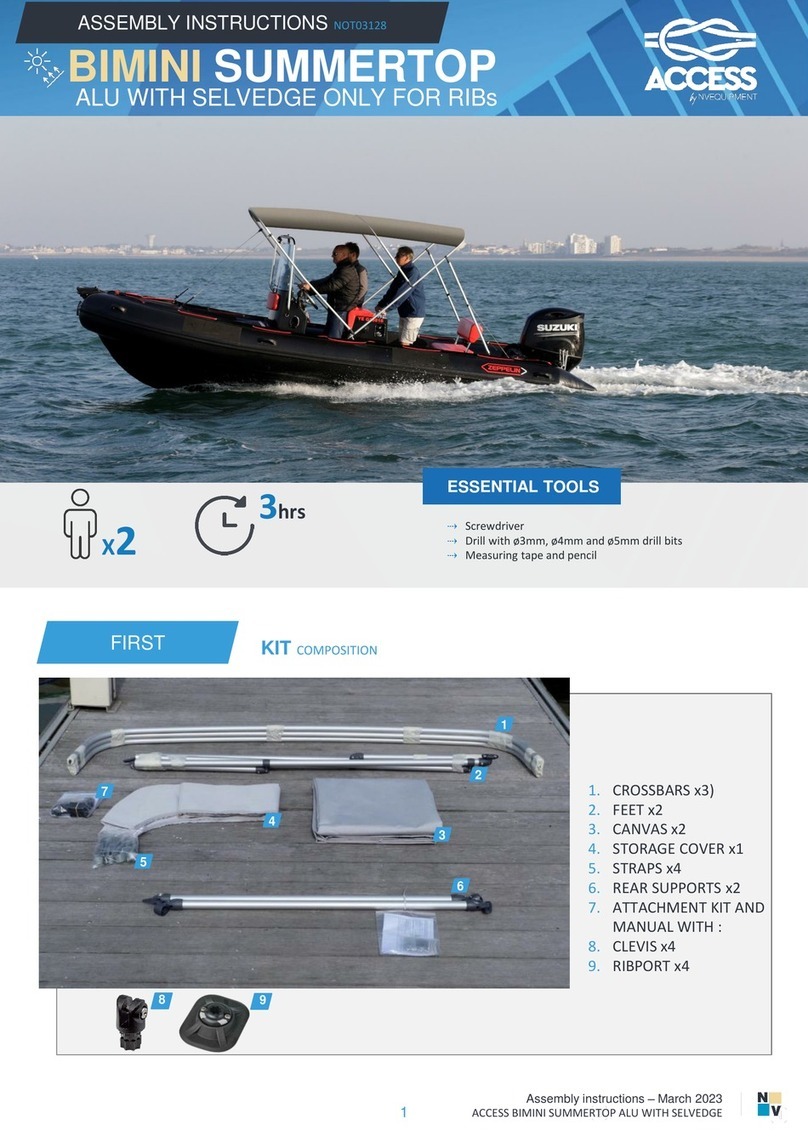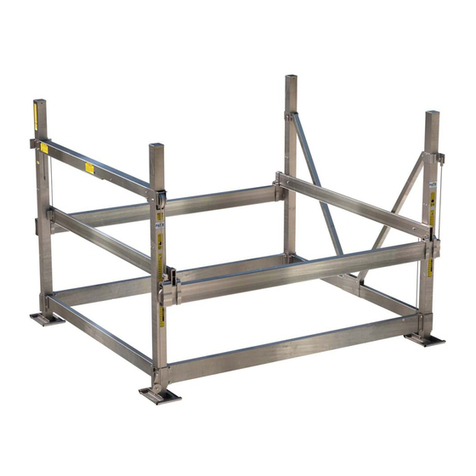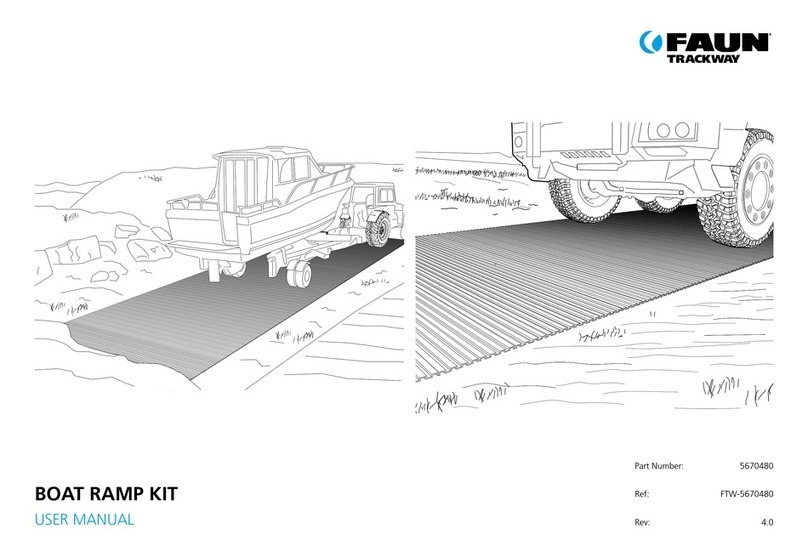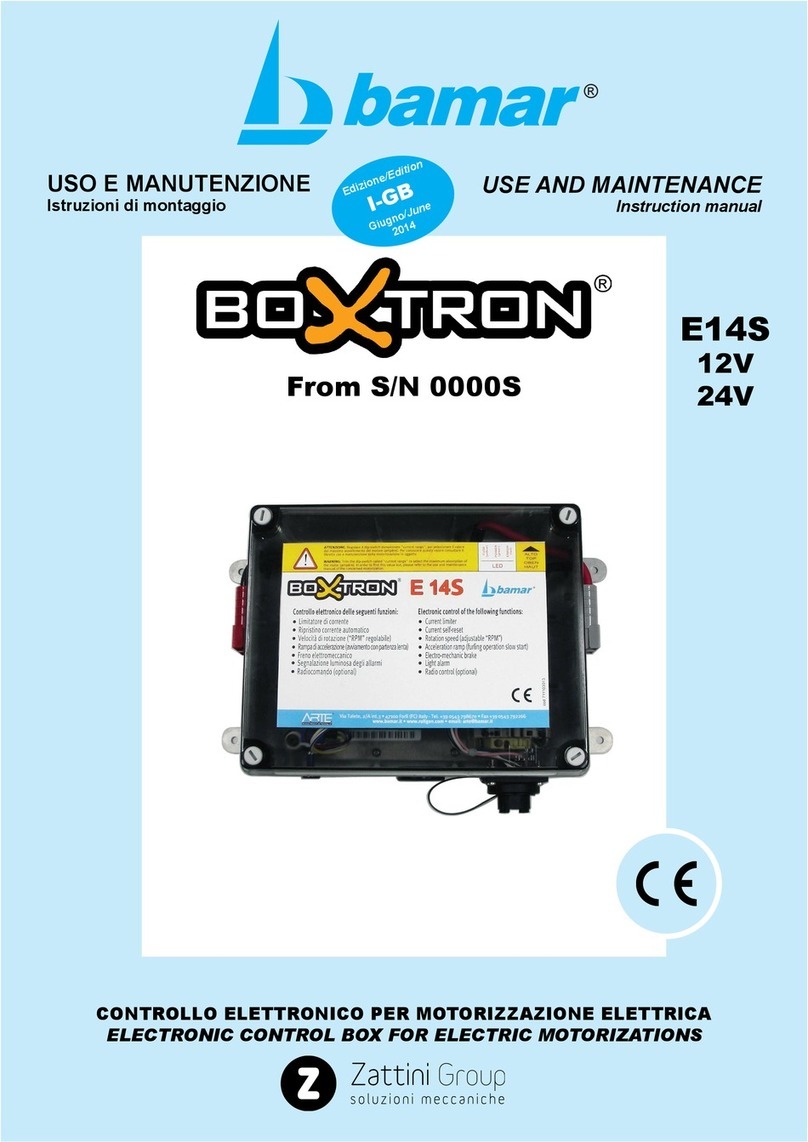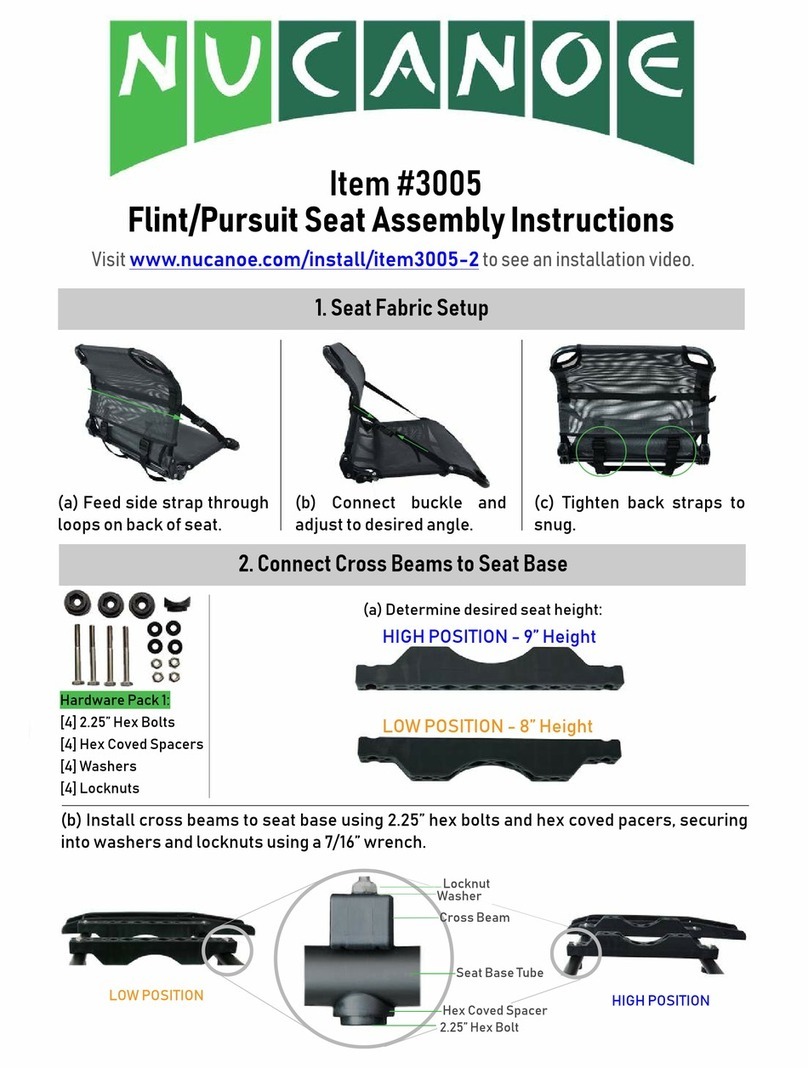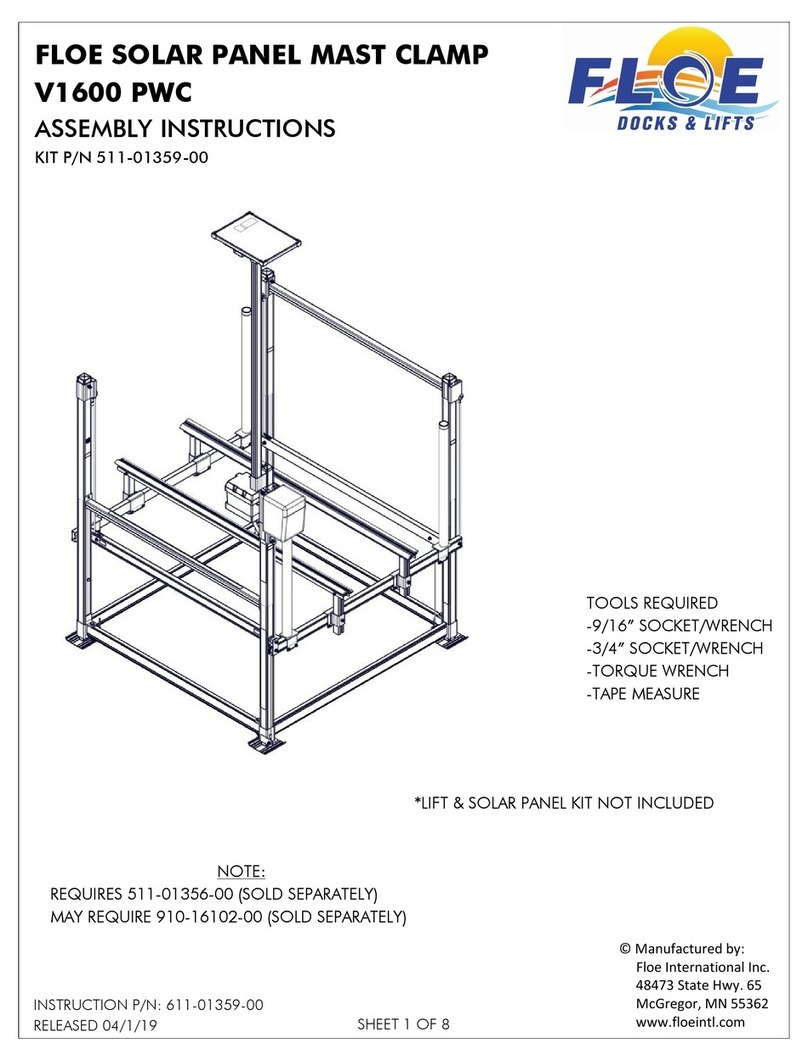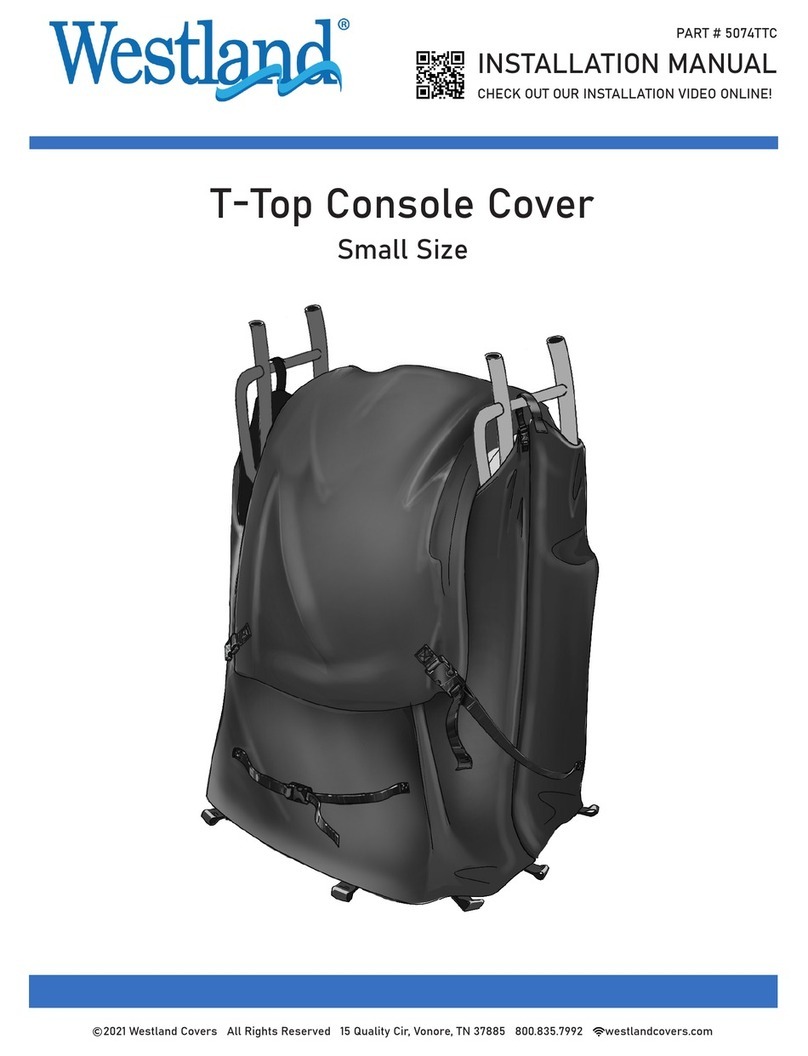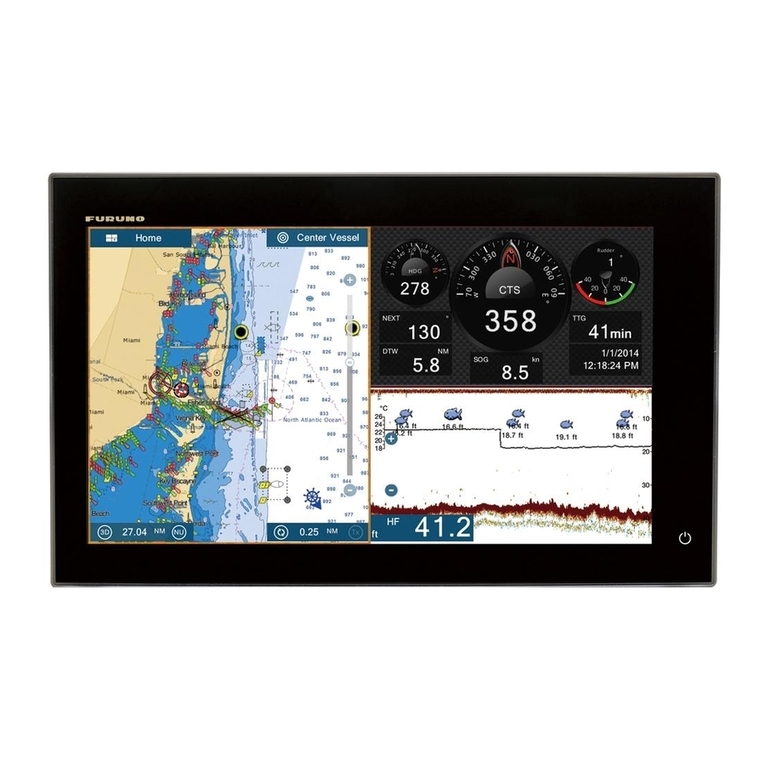9. Using your T-bolt, add additional washers to reduce the
clearance between the T-bolt and the bottom of the cup.
10. Add the anti-rotation strap to the T-bolt and washers.
11. Place the T-bolt and the anti-rotation strap through the
bottom of the cup, then add the bearing (plastic or ball-
bearing) to the T-bolt on the inside of the cup.
12. Align the holes of the cup with the ant-rotation strap
depending on the set-up of your furling line and screw the
assembly together.
13. Slide the furling drum/spool onto the luff, lining up the
sail-feed slot with the anchor shackle. Ensure that the thrust
washer stays inside the bottom opening of the spool.
14. If mast is up, take the T-bolt assembly and screw into the
turnbuckle body, adjust to the correct length. Ensure that all
cotter pins are replaced in the turnbuckle.
15. Lower the spool/drum over the bearing then raise the luff
and insert the luff support pin with the cotter ring into the
spool.
Note:DO NOT DRILL A HOLE THROUGH THE LUFF EXTRUSION
The luff rests on top of the luff support pin, not through it.
16. If mast is down, step the mast
and attach headstay.
17. Adjust the backstay to normal
tension. If headstay needs
adjusting, remove the luff support
pin and raise the spool to adjust,
afterwards reinserting the luff
support pin.
18. Use a furling line (not included)
to go through the opening in the
cup and up through the hole on the
top flange of the spool, tie a knot to secure the line in place.
19. Before raising your sail, manually rotate the spool/drum
20 times to load the furling line. If your furling line will be
going starboard, wrap the line counter clockwise. If your
furling line will be going port side, wrap the line clockwise.
Note: the furling line should be low-stretch and no larger than
3/16” twice your boat length and trimmed down if needed.
20. Position the first fairlead or block (not included) so the
furling line exits the middle of the cup to avoid any friction.
To adjust where the opening of the cup is pointing, repeat
step 14 to get the correct alignment.
21. Place a cleat (not included) near the cockpit in an easily
accessible spot to tie off the furling line.
22. To trim the halyard, ensure the messenger line is attached
then pull the halyard so the end with the ferrule reaches the
top of the forestay at the halyard top fitting.
23. For sails that are at or near full hoist, cut the halyard so
the head of the sail would be just below the sail feed slot on
the extrusion.
24. For sails that are not full hoist,
estimate the distance between the
top of the stay and the head of the
sail when it’s raised (A in diagram)
and add this to the length of the
halyard before cutting
25. Cut the halyard end with
scissors and melt the end to
prevent fraying.
26. Attach the halyard to the head
of the sail using either a halyard
shackle (not included) or tying a
knot directly to it.
27. Feed the luff of the sail into the sail-feed slot while
hoisting the sail by pulling on the messenger line which is
attached to the de-cored end of the halyard (step 6).
28. Remove the messenger line once the sail is fully hoisted
and tie off the halyard on the anchor shackle on the spool.
Note: Always remember to reattach the messenger line when
lowering your sail.
29. Tension the sail by tightening the tack tension line to the
second shackle on the spool and hoisting the sail tight by
pulling on the halyard at a vertical angle, straight down.
Note: Using a winch should never be required.
30. Furl in the sail by pulling on the furling line and keeping
tension on the jib sheet.

